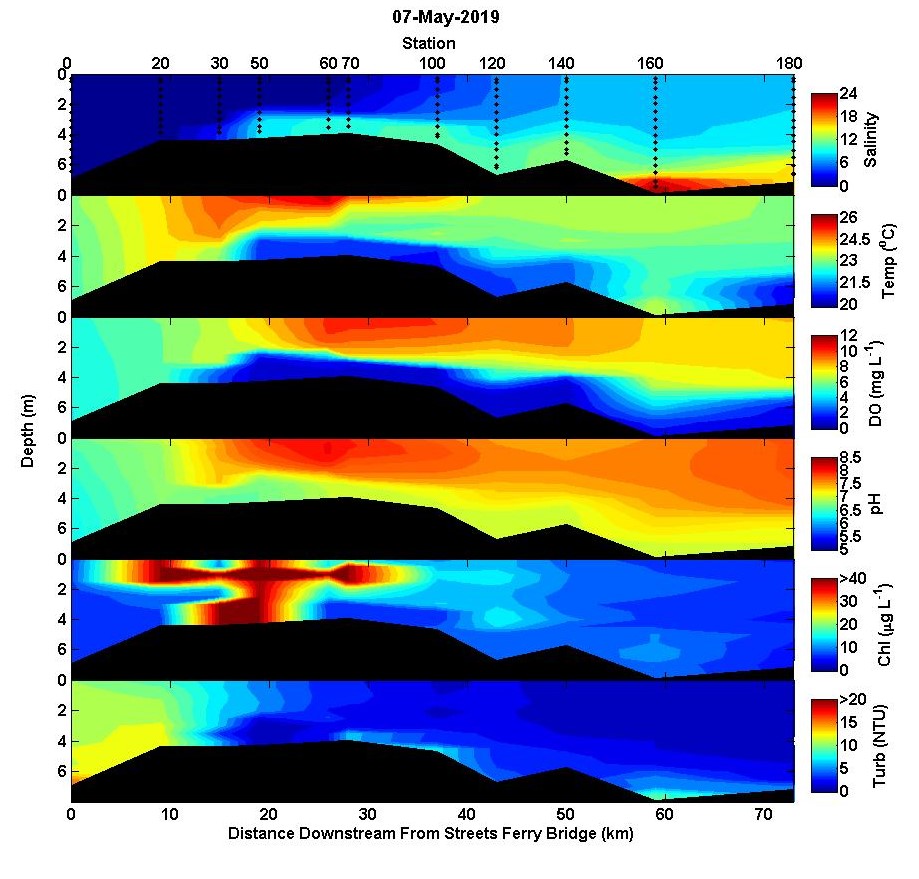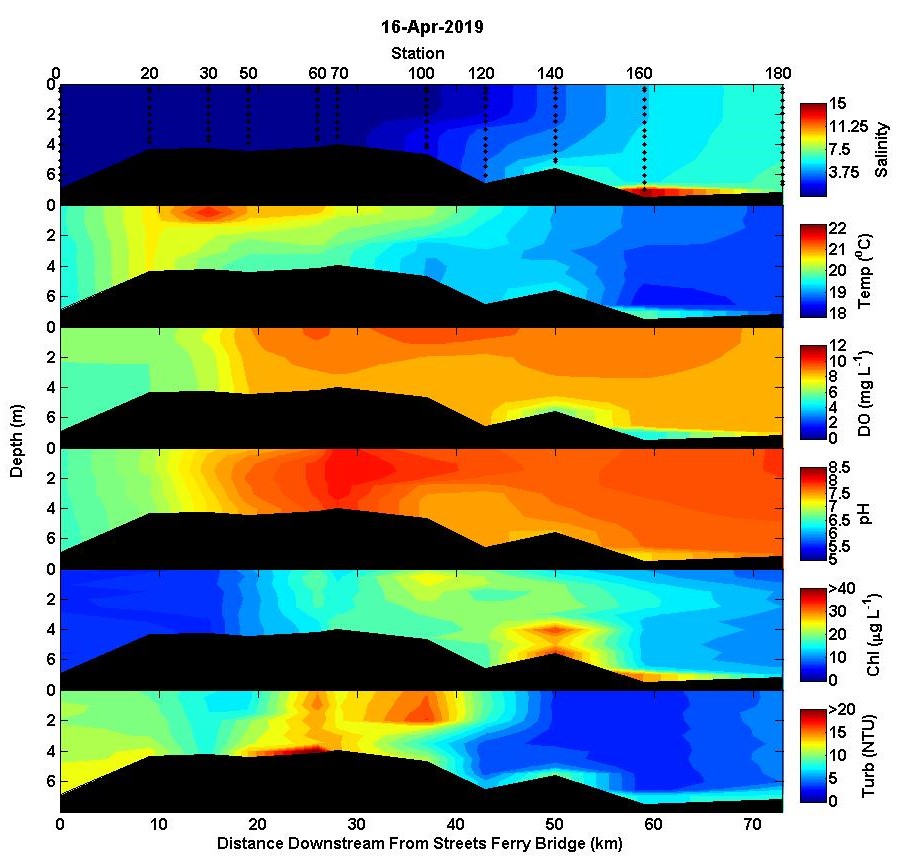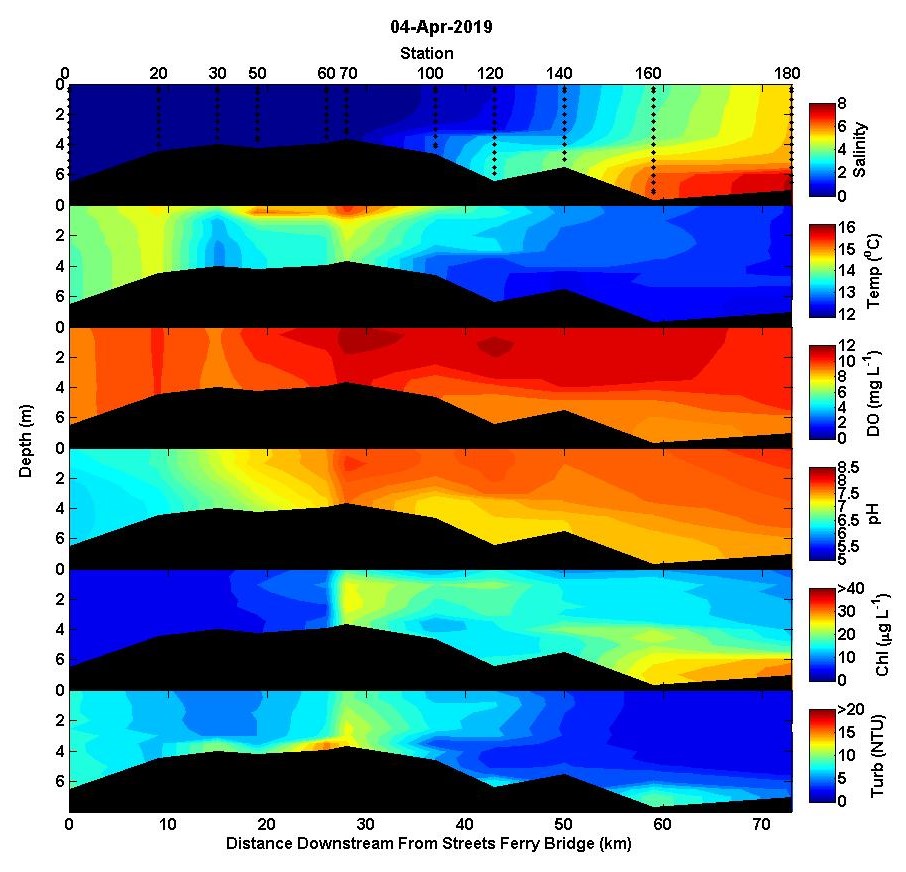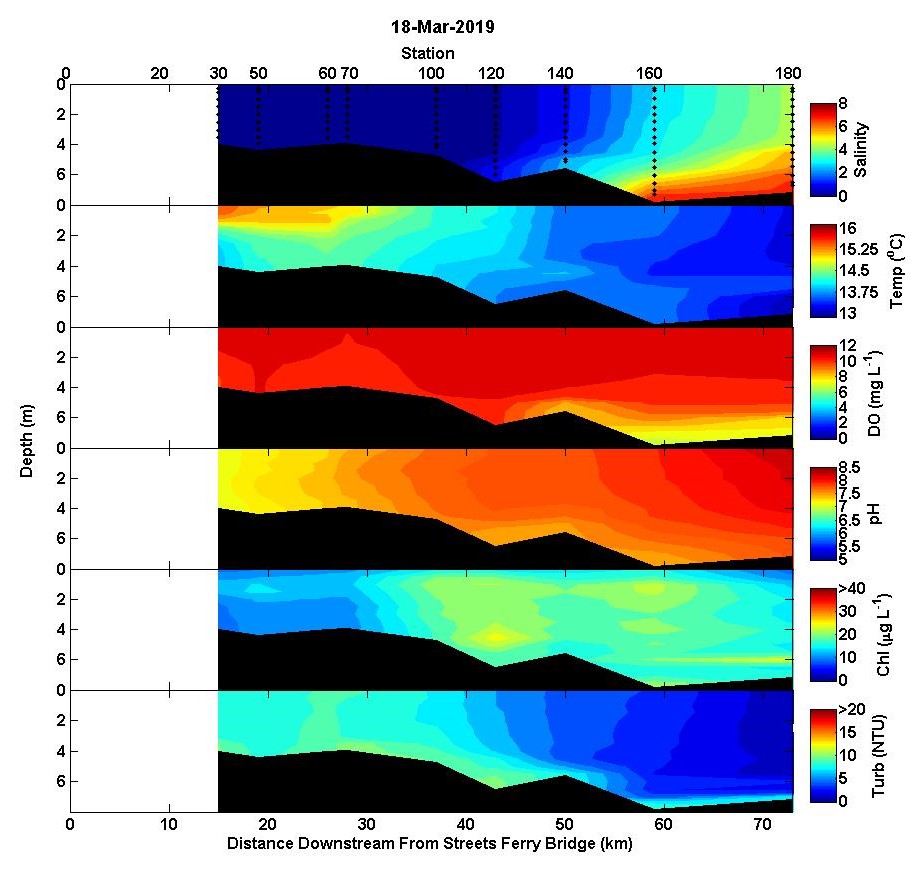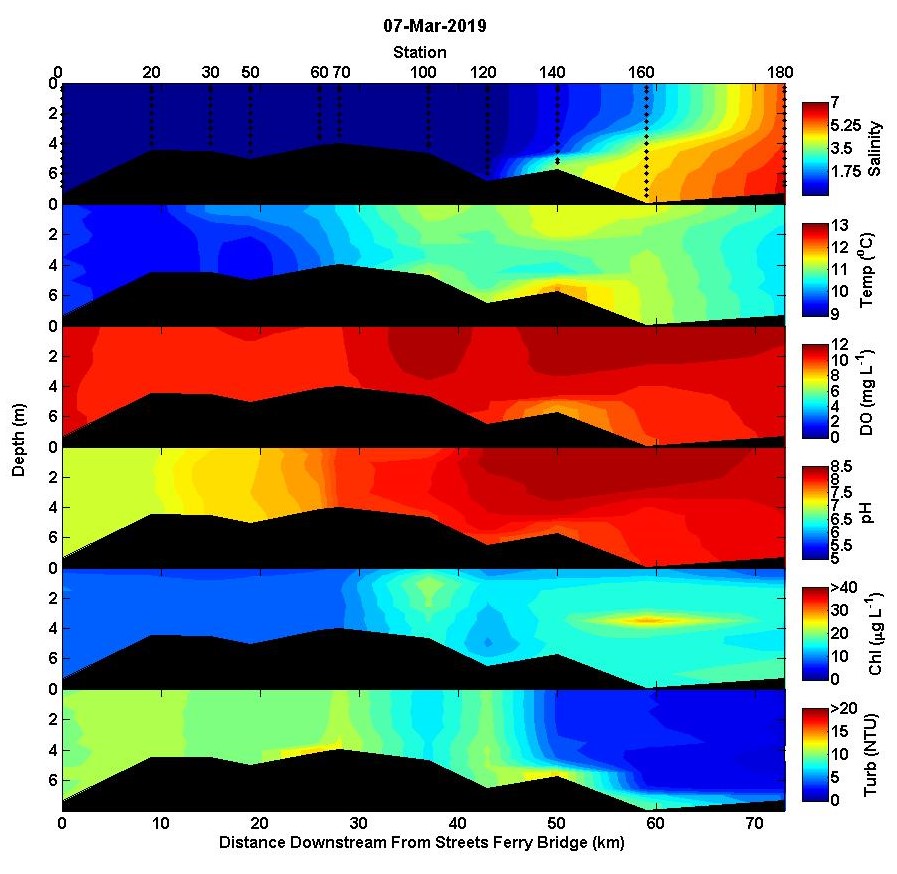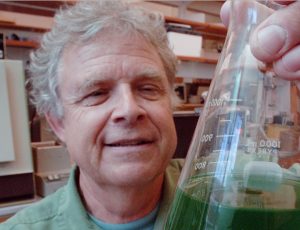Hi all,
The Neuse is an estuary again, a strongly salinity, stratified estuary with hypoxic bottom waters. The hypoxic zone stretched from just downstream of New Bern to the mouth. A zone of high chlorophyll with a subsurface maximum at ~1 m depth was detected from stations 20 to 70. Microscopic examination of surface waters from station 50 revealed a community dominated by freshwater diatoms, primarily Aulacoseira.
Until the next trip,
Nathan
